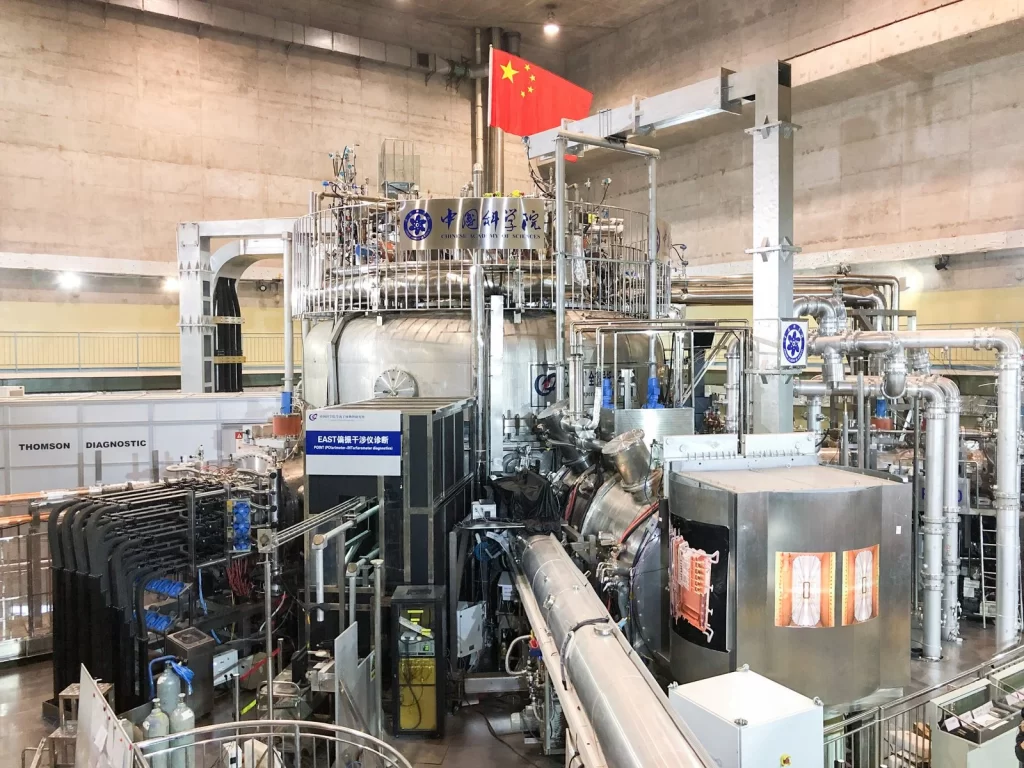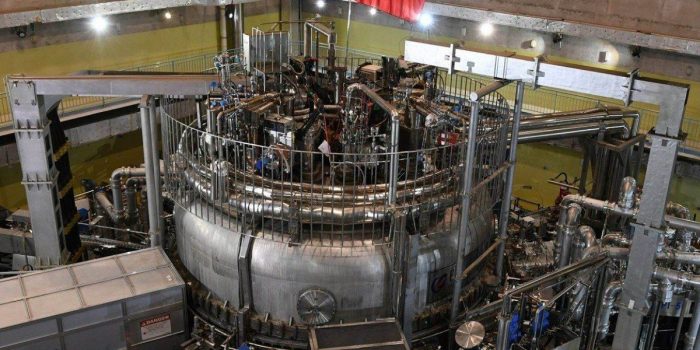China’s quest for efficient thermonuclear fusion reactors reached a new milestone as its “artificial sun” project, the Experimental Advanced Superconducting Tokamak (EAST), broke all records by generating extremely hot plasma for a remarkable seven minutes on April 12. This breakthrough comes as a significant achievement in the field of nuclear fusion, which has the potential to provide an almost limitless and clean source of energy for the future.
Unlike nuclear fission, which involves splitting atomic nuclei to release energy, nuclear fusion involves forcing atomic nuclei together to release energy, similar to the process that powers the Sun. The challenge has been to create the conditions necessary for sustained fusion reactions on Earth, and the recent accomplishment by China’s EAST project marks a significant step forward in this pursuit.

EAST, located in the eastern Chinese city of Hefei and operated by the Institute of Plasma Physics under the Chinese Academy of Sciences (ASIPP), had previously set a record of 101 seconds for maintaining plasma in 2017. However, the recent achievement of maintaining plasma for 403 seconds, after more than 120,000 runs, is a quantum leap in the field of nuclear fusion research.
This breakthrough has several implications for the future of fusion energy. Firstly, it provides a crucial experimental foundation for the operation of the International Thermonuclear Experimental Reactor (ITER), an international project that aims to demonstrate the feasibility of nuclear fusion as a viable energy source. China’s achievement in sustained plasma generation is expected to contribute to ITER’s research and development efforts.
Secondly, the success of EAST brings China closer to its goal of developing highly effective and reasonably priced thermonuclear fusion reactors. The use of abundant sea-based materials for fusion, similar to the Sun’s process, could offer a continuous and sustainable source of clean energy that is free from residual waste and harmful emissions.
The progress made by China’s “artificial sun” project also highlights the country’s commitment to scientific and technological advancements. China has invested significantly in research and development in the field of nuclear fusion, with the aim of becoming a global leader in this cutting-edge technology.
However, challenges still remain on the path to practical fusion energy. The sustained and controlled release of energy from nuclear fusion reactions requires overcoming technical difficulties such as plasma stability, heat management, and efficient energy capture. But China’s recent achievement in maintaining plasma for a record-breaking seven minutes brings us closer to the realization of practical fusion reactors, which could revolutionize the world’s energy landscape.

In conclusion, China’s breakthrough in its “artificial sun” project marks a significant milestone in the pursuit of efficient thermonuclear fusion reactors. The sustained generation of extremely hot plasma for seven minutes by EAST represents a remarkable achievement in the field of nuclear fusion research. It has the potential to contribute to the development of practical fusion reactors and could offer a clean, abundant, and sustainable source of energy for the future, with far-reaching implications for global energy security and environmental sustainability.


